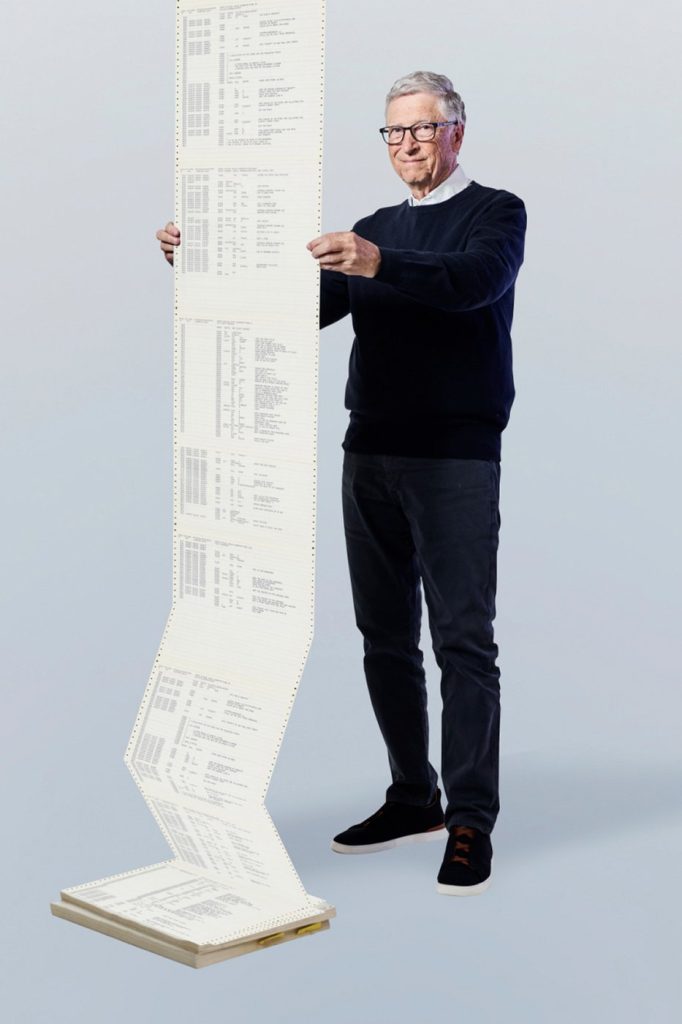Bill Gates, the founder of Microsoft, continues to reflect fondly on the groundbreaking computer code he authored 50 years ago, which defined a new era in technology. The code, printed on a teletype machine, may seem primitive compared to the advanced artificial intelligence systems of today, yet it was crucial in establishing Microsoft in April 1975. This week, the company, based in Redmond, Washington, celebrates its 50th anniversary.
In a blog post, Gates, now 69, looked back on how he and his late high school friend Paul Allen raced to build the world’s first "software factory" after they read about the Altair 8800 minicomputer in the January 1975 issue of Popular Electronics. This minicomputer was powered by a groundbreaking microchip created by the then-little-known company, Intel. Inspired by the article, Gates and Allen contacted Altair's manufacturer, Micro Instrumentation and Telemetry Systems, and assured its CEO, Ed Roberts, that they had developed software allowing users to control the hardware. However, they faced a significant challenge: they had yet to write the promised code.
To tackle this challenge, Gates and Allen decided to adopt the BASIC programming language, which had been introduced in 1964 at Dartmouth College. They faced an additional hurdle as they needed to adapt their software for the upcoming Altair computer, despite not having a prototype to work from. After two months of hard work and little sleep, Gates finally completed the program that would serve as the foundation for the Altair's first operating system. Gates expressed his pride in this accomplishment in his blog, stating, “That code remains the coolest I’ve ever written,” and even provided an option to download the original program.
This pioneering code laid the groundwork for a multinational company that would transform personal computing into a household norm. Microsoft’s software offerings have expanded to include widely-used applications like Word, Excel, and PowerPoint, along with the Windows operating system that powers the majority of modern PCs. Gates commented on the impact of this work, stating, “That was the revolution. That was the thing that ushered in personal computing.”
Gates’ reflections mark a year filled with nostalgia as he approaches his 70th birthday in October. This year has also seen the release of a memoir detailing his childhood, where he describes himself as a misunderstood child with few friends. Moreover, Gates celebrated the 25th anniversary of the philanthropic foundation he established after stepping down as Microsoft’s CEO in 2000. Under the leadership of current CEO Satya Nadella, Microsoft has thrived, achieving a market valuation of approximately $2.8 trillion, despite experiencing early struggles following Gates’ departure.
In his memoir, Gates also provided insights into his complex relationship with Steve Jobs, co-founder of Apple, another tech giant that will mark its own 50th anniversary next year. Reflecting on the passage of five decades, Gates shared, “Fifty years is a long time. It’s crazy that the dream came true.” His net worth is currently estimated at $108 billion, a testament to both his personal achievements and Microsoft's remarkable journey in the tech industry.










